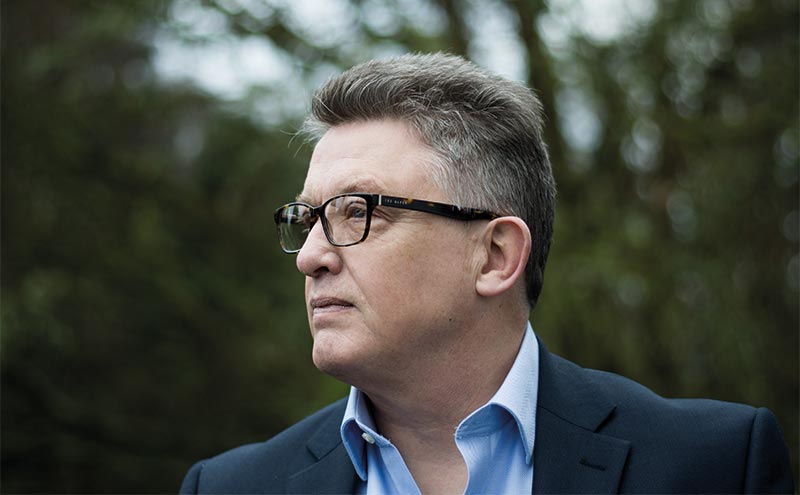
THE prospect of a bridge linking Scotland to Northern Ireland continues to gather momentum, with a top Scottish architect calling for a feasibility study to be commissioned and a Northern Irish Mayor welcoming talks.
In January of this year, Alan Dunlop, professor at the University of Liverpool and Scott Sutherland School of Architecture & Built Environment at Robert Gordon University, said that such a bridge would create a ‘Celtic Powerhouse’. He has continued championing the idea in the months since.
The call comes as the mayor of Mid and East Antrim, Councillor Paul Reid, recently extended an invitation to Nicola Sturgeon to discuss the prospect.
In a letter to the Scottish First Minister, the mayor said he would welcome further engagement with the Scottish Government on the subject.
Alan Dunlop told Project Scotland he was hopeful Nicola Sturgeon would accept the invitation and “commission a serious feasibility study to look at the possibility of actually making the connection”.
In researching the prospect of a bridge, Alan concluded that there were two viable routes. He explained, “There are two potential areas that a bridge can be connected. The first one and the best as far as connecting the island of Ireland to the UK is concerned would be the connection between Portpatrick and Larne because that would give you access not only to the central belt of Scotland but the north of England and areas like Manchester, Liverpool and Sheffield, to connect them directly to Ireland.”
While Alan believes this is the most beneficial route, it also poses a number of challenges. The distance between Portpatrick and Larne spans around 26 miles and the bridge would need to accommodate Beaufort’s Dyke, a 300-metre deep trench off the west coast of Scotland, which was used as a munitions dump after the Second World War.
“How you would build a bridge across that was a challenging thing to actually do,” Alan admitted. “I looked into the prospect of how that might be done and I found out, for instance, in Norway they’re prototyping floating bridges and they’re building bridges that are spanning across trenches that are 500 metres deep.”
Alan explained that such a bridge would float on top of the water, connected to the seabed through a series of cable connections.
He continued, “I looked at a similar situation for the Øresund Bridge, which connects Copenhagen (Denmark) to Malmö (Sweden). They have a bridge in three sections, which is an underground tunnel element, then it’s a floating island and then it becomes a cable structure, so I thought if you carried a similar prospect through on the Portpatrick to Larne bridge, there’s no reason why we couldn’t have a floating island-type bridge, which once we get beyond the Beaufort’s Dyke can become a cable-type structure and then connect it on to Larne or another part of the east coast of Northern Ireland.”
The second proposed route for a bridge is between the Mull of Kintyre and the Antrim Coast, which would be a considerably shorter distance of 12 miles and circumvent Beaufort’s Dyke. However, this option also poses challenges. Alan said that upon arrival to the Mull of Kintyre, it is still a long journey to the central belt, greatly reducing the bridge’s benefit as a shortcut. However, he added that there is scope for a number of other smaller connections to be built.
“You build the main bridge and there would be a series of smaller bridges, which would get you over Loch Fyne and places like that, so you actually could make the journey right into the central belt much easier and much quicker.”
Alan estimated that the Portpatrick to Larne route could cost around £20 billion while the Mull of Kintyre to Antrim route would come in at about £12 billion.
Alan said the response to the proposed bridge has been incredible. He continued, “I think it was the idea of a ‘Celtic Powerhouse’ that really stimulated everybody, and more than just the technical ambition behind it.
“We’re in a state of flux at the moment. No one knows what’s really going to happen with Brexit and no one knows what’s going to happen in the next ten years, if there’s going to be another Referendum for independence, for instance.
“If Brexit does happen and we do break away from Europe, the prospect of actually making much easier physical connections between two islands is something that people are interested in, and people who are thinking about Scotland being an independent country, again, from their point of view the easier we make connections to other islands and to other parts of not only the UK but potentially onto Europe, the better it would be for us.
“I know we’ve had our political challenges in the past…but we’re Celts and we’re the same, so anything that connects the two islands and the communities both sides of the Irish Sea, I think is a positive thing. I also think that there are tremendous benefits in it politically and economically.”
Alan added, “The principal professional behind this would be an engineer, rather than an architect, but I would be happy to be involved in any kind of way. But the first part of it is a serious feasibility study looking at two options and there seems to be the momentum at the moment to get this up off the ground.”








